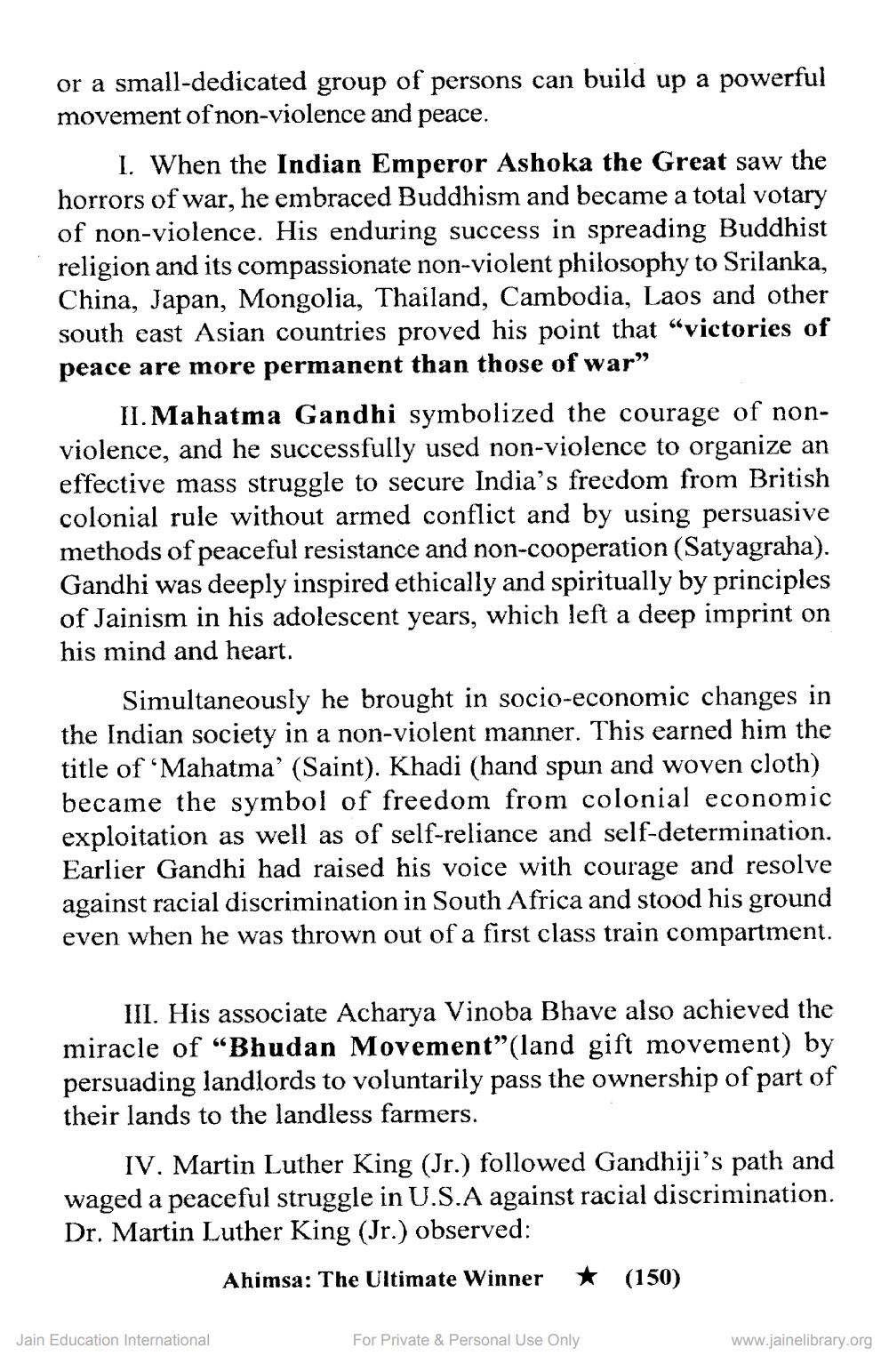________________
or a small-dedicated group of persons can build up a powerful movement of non-violence and peace.
I. When the Indian Emperor Ashoka the Great saw the horrors of war, he embraced Buddhism and became a total votary of non-violence. His enduring success in spreading Buddhist religion and its compassionate non-violent philosophy to Srilanka, China, Japan, Mongolia, Thailand, Cambodia, Laos and other south east Asian countries proved his point that “victories of peace are more permanent than those of war”.
II. Mahatma Gandhi symbolized the courage of nonviolence, and he successfully used non-violence to organize an effective mass struggle to secure India's freedom from British colonial rule without armed conflict and by using persuasive methods of peaceful resistance and non-cooperation (Satyagraha). Gandhi was deeply inspired ethically and spiritually by principles of Jainism in his adolescent years, which left a deep imprint on his mind and heart.
Simultaneously he brought in socio-economic changes in the Indian society in a non-violent manner. This earned him the title of ‘Mahatma' (Saint). Khadi (hand spun and woven cloth) became the symbol of freedom from colonial economic exploitation as well as of self-reliance and self-determination. Earlier Gandhi had raised his voice with courage and resolve against racial discrimination in South Africa and stood his ground even when he was thrown out of a first class train compartment.
III. His associate Acharya Vinoba Bhave also achieved the miracle of “Bhudan Movement”(land gift movement) by persuading landlords to voluntarily pass the ownership of part of their lands to the landless farmers.
IV. Martin Luther King (Jr.) followed Gandhiji's path and waged a peaceful struggle in U.S.A against racial discrimination. Dr. Martin Luther King (Jr.) observed:
Ahimsa: The Ultimate Winner * (150)
Jain Education International
For Private & Personal Use Only
www.jainelibrary.org




